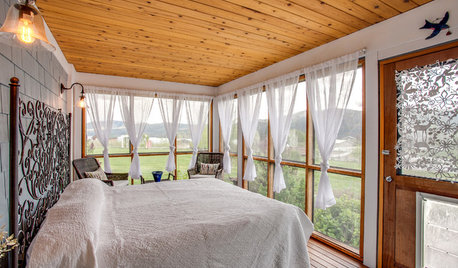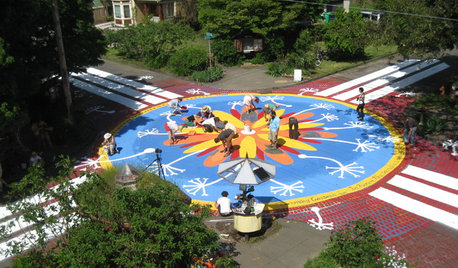Which is the better tree for fall color?
tj-oak
14 years ago
Related Stories

LANDSCAPE DESIGNGarden Overhaul: Which Plants Should Stay, Which Should Go?
Learning how to inventory your plants is the first step in dealing with an overgrown landscape
Full Story
GARDENING FOR BUTTERFLIES3 Ways Native Plants Make Gardening So Much Better
You probably know about the lower maintenance. But native plants' other benefits go far beyond a little less watering and weeding
Full Story
FALL GARDENING6 Trees You'll Fall For
Don’t put down that spade! Autumn is the perfect time for planting these trees
Full Story
FALL GARDENING11 Trees for Brilliant Fall Color
Give your landscape the quintessential look of autumn with the red, orange and yellow leaves of these standouts
Full Story
LANDSCAPE DESIGN7 Great Trees for Summer Shade and Fall Color
These landscape-pro faves straddle the seasons beautifully. Could one enhance your own yard?
Full Story
FUN HOUZZHouzz Quiz: Which Midcentury Modern Chair Are You?
Have a seat for a little fun. Better yet, have a seat that has you written all over it
Full Story
GARDENING AND LANDSCAPING11 Ways to Make Your Sleeping Porch Even Better
Turn off that air conditioner and tune in to the delights of slumbering in the nighttime breeze
Full Story
LIFEYou Said It: ‘Life Is Better When the House Is Clean’ and More
Highlights from the week include great advice for a clean, organized and happy 2015
Full Story
COMMUNITY15 Ways to Make Your Neighborhood Better
Does your community lack ... well, a sense of community? Here's how to strengthen that neighborly spirit
Full Story
BATHROOM DESIGN12 Designer Tips to Make a Small Bathroom Better
Ensure your small bathroom is comfortable, not cramped, by using every inch wisely
Full Story








Dan _Staley (5b Sunset 2B AHS 7)
scotjute Z8
Related Professionals
Tempe Landscape Architects & Landscape Designers · Elwood Landscape Architects & Landscape Designers · Bethlehem Landscape Contractors · Concord Landscape Contractors · Boca Raton Landscape Contractors · Post Falls Landscape Contractors · Soddy Daisy Landscape Contractors · Colorado Springs Siding & Exteriors · Oregon City Siding & Exteriors · Fredericksburg Decks, Patios & Outdoor Enclosures · Aberdeen Decks, Patios & Outdoor Enclosures · Dearborn Decks, Patios & Outdoor Enclosures · Lebanon Decks, Patios & Outdoor Enclosures · Spokane Decks, Patios & Outdoor Enclosures · Truckee Decks, Patios & Outdoor Enclosureslou_spicewood_tx
Embothrium
iforgotitsonevermind
Dan _Staley (5b Sunset 2B AHS 7)
mlevie